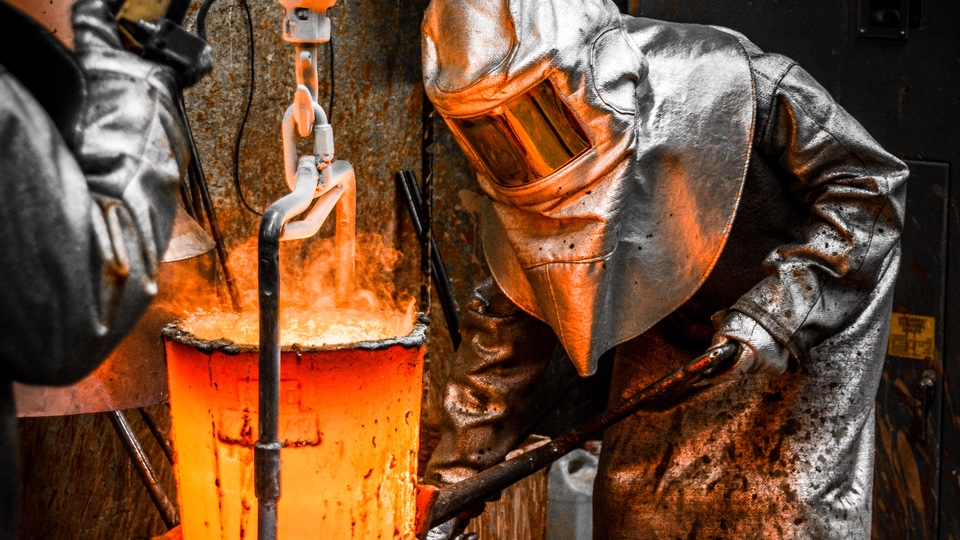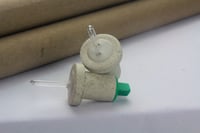
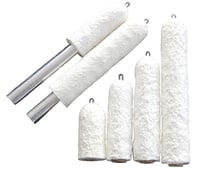
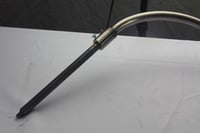
When faced with the challenge of measuring the temperature of molten metal, what’s the best tool to use? A single or multi-use immersion thermocouple is an inexpensive sensor that offers flexibility and portability and is the most common solution for molten metal temperature measurement. When considering which type of thermocouple or temperature sensor to buy, your team should consider the following factors.
Know Your Thermocouple
The concept of a thermocouple is grounded in science. A thermocouple is constructed using wires made of two dissimilar metals; when joined together at an electrical junction, the union of the dissimilar metals produces a voltage via the Seebeck effect which can be measured to calculate temperature. According to Direct Industry, “By connecting the two remaining ends called reference welds to a voltmeter, an electrical voltage is measured when the temperature of the hot weld is different from that of the reference welds."
Regardless of the material composition and characteristics, thermocouples for molten metal applications are typically built as replaceable tips which are fitted on the end of a long pole, or lance. The lance is then used to safely position the thermocouple for immersion into the molten metal bath.
Thermocouple sensors can provide a fairly accurate temperature reading across a variety of ranges. Within the operating range of most molten metals, thermocouples together with modern pyrometer instruments can yield accuracy with +-2F (+-1C) degrees, which is generally more than sufficient for molten metal operations.
Manufacturers and metal-works companies like multi-use thermocouples for a variety of reasons:- Thermocouples are useable over a wide range of varying temperatures.
- They’re interchangeable and work with instruments from different vendors, making replacement a snap.
- The sensors come with standard, universal connectors.
- Standard thermocouples are available from multiple vendors, allowing competitive pricing comparisons.
Know Your Thermocouple Type
Another advantage of thermocouple use is the variety of types available, depending on the needed temperature range measurement and the environmental scenario.
Thermocouple types correspond to letters of the alphabet, and there are at least 11 types. In general, temperature range is the most important factor in choosing your thermocouple. From the frigidity of double-digit negative temperatures to the blistering heat measured in thousands, the range is your guide when choosing the perfect thermocouple. Here’s a rundown of the most popular types for molten metal applications:
- K – Two wires are made respectively of nickel-chromium and nickel-aluminum with a range of –454 to 2,300F (–270 to 1260C). Type K thermocouples highly durable and are commonly used and recommended for measuring molten aluminum, brass, bronze, and magnesium.
- S – Wires made of platinum-rhodium 90/10% and platinum 100% with a temperature range of 932 to 3100F (500 to 1700C). Type S is ideal for use with iron, steel or other high-temperature alloys.
- R – Uses wires of platinum-rhodium 87/13% and platinum. Type R thermocouples cover a range very similar to type S but are slightly more stable and accurate. Because the rhodium percentage is higher, type R is more expensive than S.
- B - Uses wires of platinum-rhodium 70/30% and platinum. Due to the high rhodium content, type B is the most expensive but is very stable and accurate up to all the way up to 3275F (1800C).
For a more complete description of other thermocouple types, check out this handy reference at Direct Industry.
Response Time
Response time can also be an important factor to consider when selecting a thermocouple, as it reflects the time required to obtain an accurate reading. Thermocouple response time is mostly a function of the material used in its construction, and the thermal mass of the finished thermocouple probe. The more mass involved, the longer it will take to obtain a stable reading.
Reusable type K thermocouple probes have a relatively high mass due to their rugged construction in which the Nickel-Chromium / Nickel-Alumel metals are drawn together, forming a substantial and durable tip. This construction leads to a longer response time but also makes them quite resilient. Type K thermocouples can be reused hundreds of times making them very economical as well.
In contrast, type S, R, and B type thermocouple probes typically use very fine wires enclosed in a small tube of quartz glass. The glass thermocouple tip is then fixed in a ceramic base and often fitted onto a cardboard tube protected by an insulating shield. These thermocouple tips have very low mass and fast response times, registering a reading in just a few seconds. The flip side of the low mass and fast response time is that these thermocouples have a short life and must be replaced frequently.
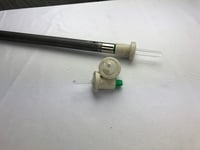
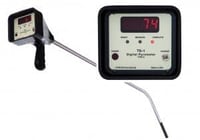
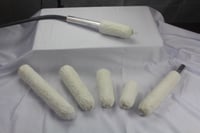
Price and Customization
Based on the unique requirements and high temperatures of molten metal, thermocouples are the most commonly used sensors for molten metal temperature measurement and analysis. Most thermocouple manufacturers can advise on not only thermocouple type, but also recommend other product features and materials that are best suited for a particular application.
For smaller crucibles and slag-free conditions, many manufacturers recommend simple multi-dip tips—high precision, non-splash probes that are ideal for furnaces where no surface slag is present. These economical tips products provide quick, accurate temperature measurements. Unlike larger multi-use thermocouples, an insulating sleeve is not needed since only the quartz tube is dipped in molten metal.
Larger furnaces or ladles where the probe must penetrate surface slag to obtain an accurate reading may require thermocouple probes with insulating sleeves. This protective insulation, which is available in different lengths, protects the lance and thermocouple contact socket while the probe is immersed through the hot slag layer.
Choosing a thermocouple solution can be daunting task, but knowing what to look for will make it easier to select the right option for your needs. For more information about thermocouples and other molten metal analysis tools, explore the rest of our blog.

